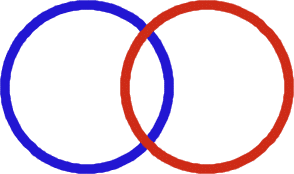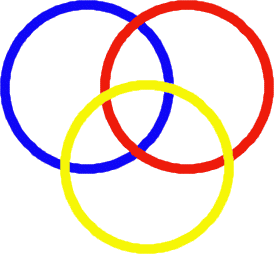Copyright © University of Cambridge. All rights reserved.
'Bean Bags for Bernard's Bag' printed from https://nrich.maths.org/
Show menu
Why do this problem?
This activity is especially good to do with a small number of pupils. This will give them confidence to talk with each other and discuss their ideas. It is amazing how many different ways of approaching the problem they will find.
One teacher commented that "ALL children loved this! It was good for developing understanding of Venn diagrams and recording in a systematic way".
Possible approach
Introducing this activity as described in the problem with hoops and bean bags would be a good idea, if possible. This might mean going outside, taking over the school hall, or pushing all the tables to the edge of the classroom to create floor space. You could start with just two hoops and eight bean bags, and ask one child to put the bean bags in the hoops however they like. Ask questions
about this distribution of bean bags, such as the number in each hoop and the number in the overlap. It's important at this stage to listen to the pupils so that you can assess their understanding of the overlapping area.
Introduce a third hoop and set up the challenge. Invite children to work in pairs or groups to find at least one solution. Give them the choice as to what they use in terms of equipment: some may want hoops, some may be happy to draw representations. However they work at the problem, encourage them to record their solution/s somehow so they don't forget.
Once some solutions have been found, bring the group together again to share (and check!) the answers they've got so far. At this point, you can challenge them to find ALL the solutions. Give them a chance to talk in their pairs about how they might do this before sharing some suggestions. Draw attention to the methods which use some sort of system, so that there is less chance that
solutions will be missed out.
This investigation would make an engaging and attractive display, and you could encourage learners to describe the system they devised so that anyone looking at the display would be able to follow it.
(This activity would also be worth doing as staff CPD.)
Key questions
How many bean bags are in this space?
Are there the correct number in the red hoop etc.?
Possible extension
Simply ask the pupils to suggest extensions by asking "I wonder what would happen if we ...?"
Possible further work which leads to material for the exceptionally mathematically able
Go to Plants teachers' notesPossible support
You could provide this sheet for those having difficulty in recording. It contains the three hoops printed six times.

